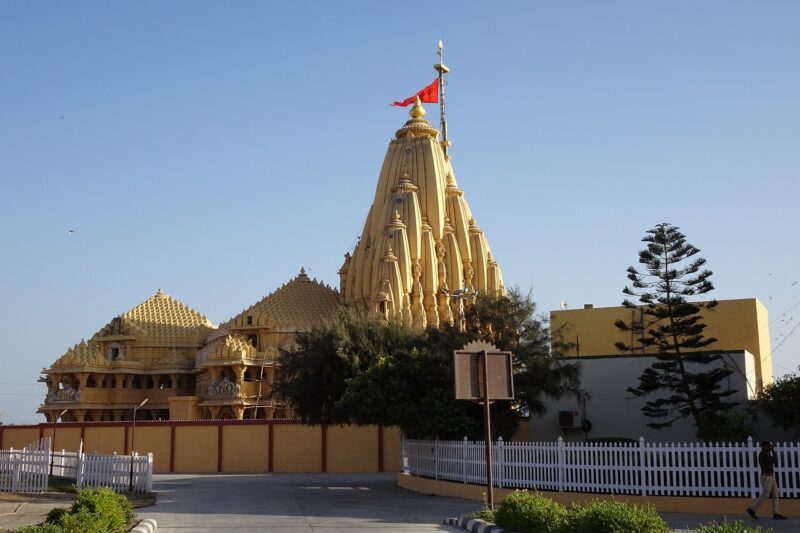Somnath: A Sacred Destination for Religious Pilgrims
Somnath, located in the Saurashtra region of Gujarat, India, is one of the most revered pilgrimage sites for Hindus. Known for its rich history, spiritual significance, and architectural grandeur, Somnath is home to the famous Somnath Temple, which is dedicated to Lord Shiva. It is one of the twelve Jyotirlingas (the holiest shrines of Shiva) and holds a significant place in Hindu mythology and religious practice. Somnath has long been a center of devotion, attracting countless pilgrims from across the world.
Historical Significance
The history of Somnath is as ancient as it is captivating. According to Hindu mythology, the Somnath Temple was originally built by the Moon God, Soma, to atone for a curse placed upon him. Over time, the temple became a symbol of devotion and faith, and it attracted pilgrims from all corners of India. The temple’s location is strategic, set on the Arabian Sea’s edge, adding a serene and peaceful atmosphere to the spiritual experience.
The Somnath Temple has a history of destruction and reconstruction. It was plundered by foreign invaders several times, most notably by Mahmud of Ghazni in 1025 CE, who destroyed the temple and took away its riches. Despite these setbacks, the temple was rebuilt multiple times. The current structure was reconstructed in the 1950s, under the efforts of Sardar Vallabhbhai Patel, and today stands as a testament to resilience and religious pride.
Architectural Marvel
The Somnath Temple is an architectural masterpiece. The temple’s design follows the Chalukya style of architecture, featuring intricate carvings and detailed sculptures of various deities from Hindu mythology. The structure has a towering spire that rises to a height of 50 meters, offering a majestic view of the temple complex. The temple’s sanctum sanctorum houses a beautifully sculpted idol of Lord Shiva, which is worshipped by millions of devotees daily.
One of the unique features of the Somnath Temple is its orientation. The main entrance of the temple faces the Arabian Sea, allowing worshippers to witness the sea and its waves crashing against the shore, adding to the temple’s aura of divinity. The temple’s location and ambiance combine to create a powerful spiritual experience for all who visit.
Spiritual and Religious Importance
Somnath Temple holds immense religious importance in Hinduism, and it is believed that visiting the temple and offering prayers here washes away sins and grants divine blessings. The Jyotirlinga at Somnath is considered particularly powerful, as it is said to be self-manifested, making it an object of veneration. Many Hindus believe that their journey to Somnath completes their pilgrimage circuit of the twelve Jyotirlingas.
Apart from its religious significance, Somnath is also an important center of culture and learning. The temple attracts scholars, philosophers, and devotees who engage in religious discourses, study, and meditation.
Other Attractions
While the Somnath Temple is the main attraction, the town offers other notable places of interest. The Somnath Beach, with its pristine sands and tranquil waters, provides an ideal spot for relaxation and reflection. The nearby Bhalka Tirth, another important pilgrimage site, is believed to be the place where Lord Krishna was struck by an arrow, leading to his departure from Earth. The temple dedicated to him here is an important stop for those visiting Somnath.
Conclusion
Somnath is not just a religious destination but also a symbol of the spiritual and historical richness of India. Its sacred temple, coupled with its captivating history and serene surroundings, makes it an essential pilgrimage site for Hindus. Whether one is drawn by faith, history, or the tranquil beauty of the Arabian Sea, Somnath promises an enriching experience for all who visit. For devotees and travelers alike, it remains a place where history, spirituality, and divine energy meet in perfect harmony.








